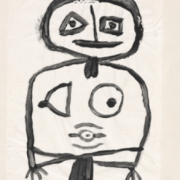Lost in the fog?
Thoughts, Feelings, Beliefs.
We have the ability to create wholeness and love or destruction and chaos. Everything I see, hear, and feel, I expected first in my mind, and then it came into being. We are phenomenal creators, and this ability to imagine gives us tremendous power and responsibility. But, mostly, we are unaware of it.
Until we slow down and shine a light on the forces hard at work creating our stories, we can’t go far.
Lost in the fog?
Asleep, we’re lost in the mist. We can’t see what is right in front of us. We speed through the dense fog of our own creation and wonder why we can’t find any way out. We wonder why we go around in circles, recreating what we don’t want.
But how do we actually create our life stories?
The answer is through our thoughts, feelings, and beliefs.
Thoughts
Our thoughts become the narrators of our stories by giving birth to our inner voices. They tell us what they think is coming next, and the supposed meaning of what’s already happened. “You won’t get that job,” your thoughts tell you, “because you were overlooked last time.” “He won’t go out with you,” your thoughts continue, “He’s too gorgeous for the likes of you.” Your thoughts also give you advice: “Don’t ask her out because you might make a fool of yourself.” If left unchecked, your thoughts narrate a dark and depressing story, morphing into critical tyrants who assault you day and night.
Emotions
If our thoughts are narrators, then our feelings and emotions are the characters who interact to make our stories interesting. Our stories contain many characters who conform to the roles we play on any given day. The loving parent, for example, is created by our nurturing and empathic feelings for our children. There is also the controlling critic, who is always trying to make us better but is fed by our fears and insecurities; the inner marketing manager, who invents sales pitches out of feelings of stress and ambition; and the impulsive shopper born out of a sense of impatience and entitlement. We may recognise our frustration in the naughty two-year-old who sometimes throws temper tantrums and toys from the crib.
Regardless of which characters your story features, it’s driven by strong personalities, who can sabotage your re-writes.
Before you can ask your emotions, and the characters they play, to step away, you must first listen to and befriend them – understanding that they’re only trying to help but are going about it in dysfunctional and ineffectual ways.
Our feelings and thoughts flesh out our stories, but it’s our beliefs that are foundational to how our stories unfold.
Beliefs
Beliefs form the structure of our stories because they’re born from thoughts and feelings that have hardened over time. They’re not merely “hunches” any longer; there is “evidence” or proof that they are, indeed, true.
Because of this, our beliefs are good indicators of how our personal plot lines will unfold: what we will and won’t experience. If we believe, for example, that we’re unloveable then we will long for a love that we can’t find; people will reject us. If we believe we aren’t talented enough, we’ll cry out for recognition and be overlooked for promotions.
Need help?
If you’d like to help re-writing your story, get in touch.
* Artwork: Als ich nochjung war (1938, When I was still young) by Paul Klee






